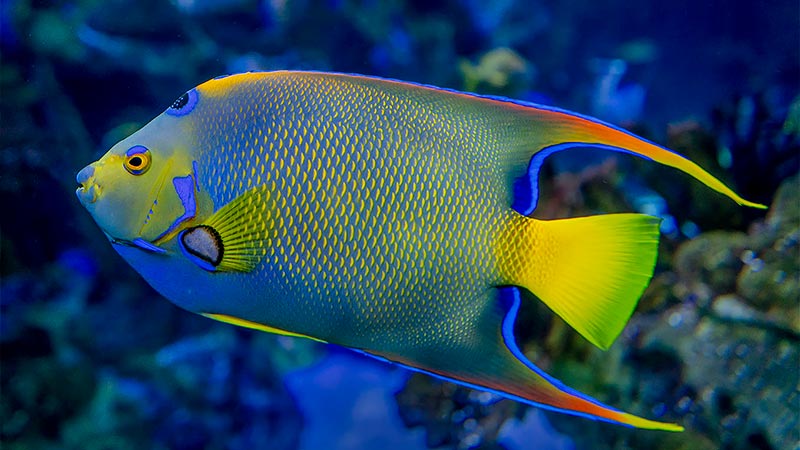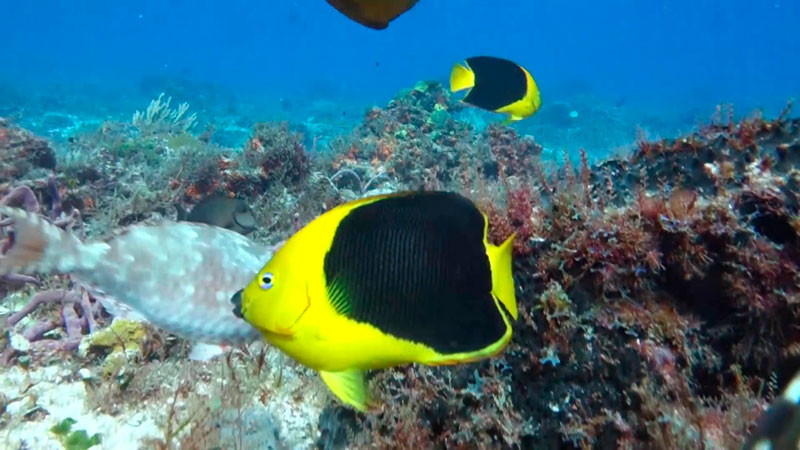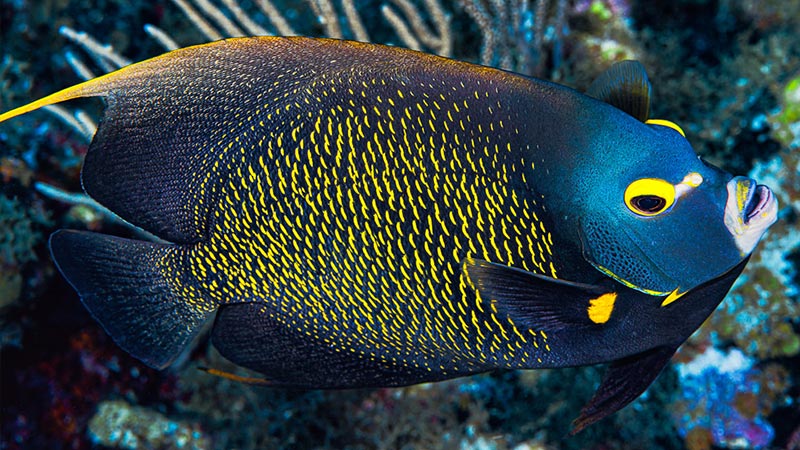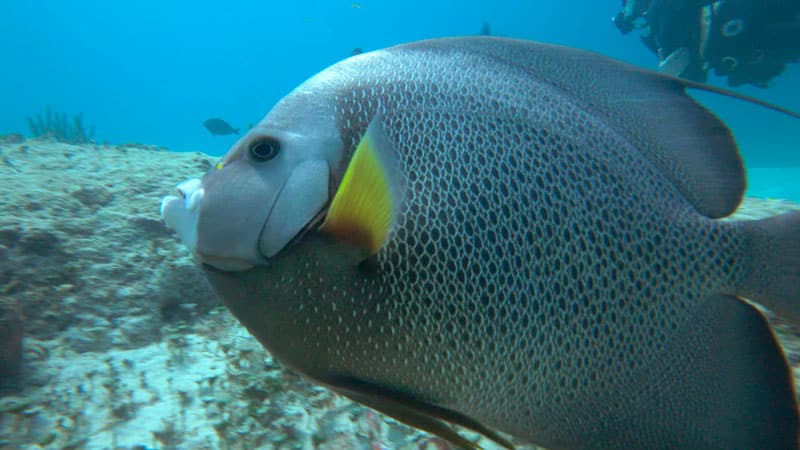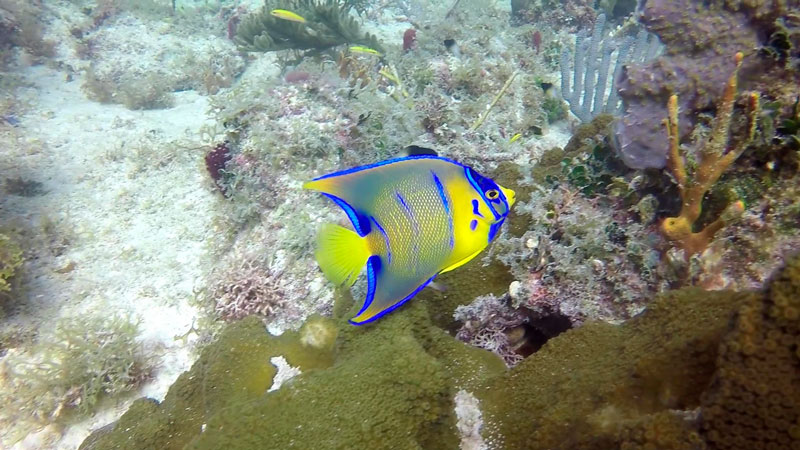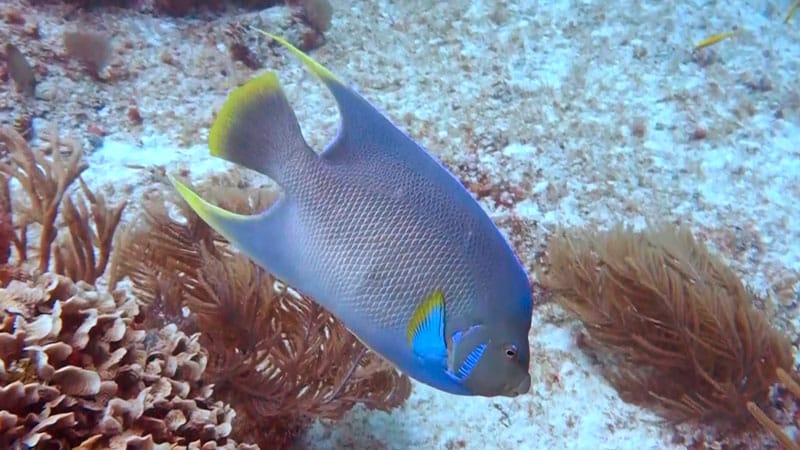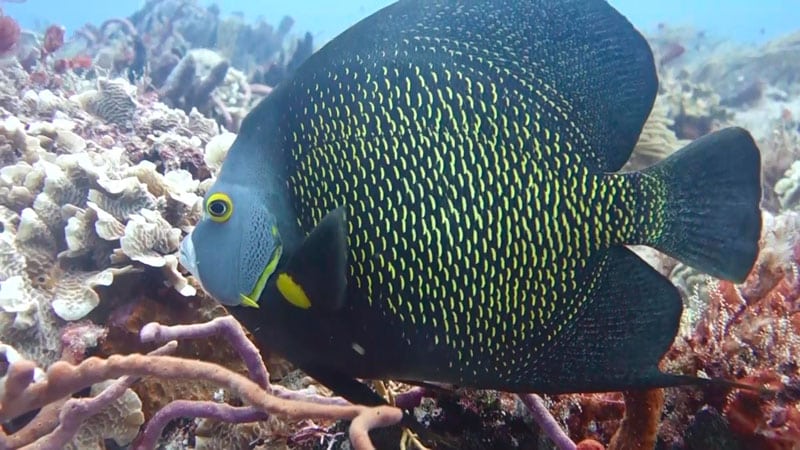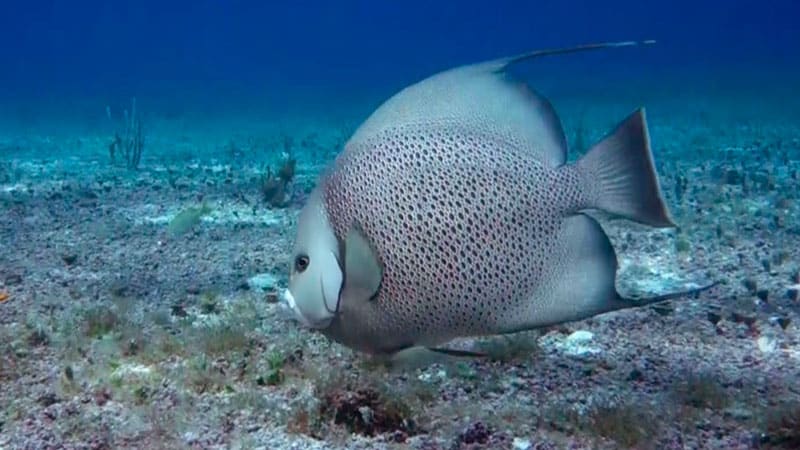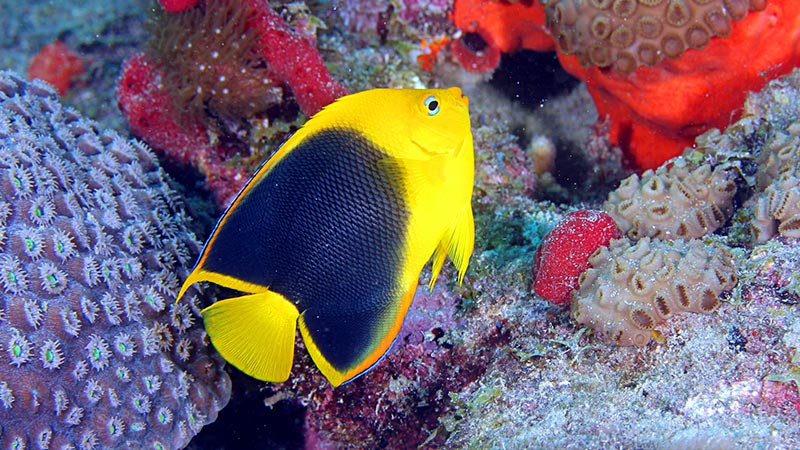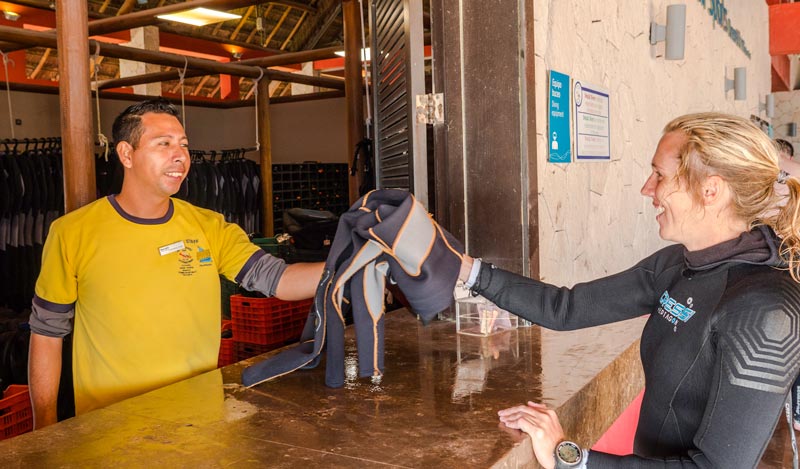We are very sorry, aquarium collectors. This guide to the 5 saltwater angelfish species is for those who prefer to see them in their natural habitat.
So, forgive us, but we won’t talk about breeding angelfish; nor how to care for them. Our saltwater angelfish take care of themselves. Neither will you find information about tanks. Well, that’s right, about tanks, yes: the one’s we divers need to breathe underwater and see them face to face.
And divers who dive in the Caribbean have a unique privilege. Swimming surrounded by these tropical fish. We see them interacting, their incredible shades, and observe how they search for their food among multicolored corals.
It is not uncommon to find a “rock beauty” showing us its character and to see the transition between juvenile and adult angelfish on the same scuba dive or several species of angelfish swimming together. All without worrying about how many saltwater angelfish can be kept together – lucky us!
Hey, there’s still time to join us. Read the saltwater angelfish species guide and come to the Caribbean to see them.
Diver, if you’re wondering what we’re going to learn about the types of marine angelfish in this article, take a look at the table of contents.




